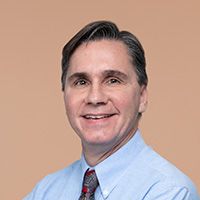Deposit Your Tax Refund Directly Into an IRA or Other Account – It's Easy!
If you're getting a tax refund this year, don't feel like it all has to be deposited into an ordinary bank account.


Are you getting a federal tax refund this year? If so, don't think it has to go into an ordinary checking or savings account at your bank. Or that it all must go into just one account. You actually have several options when it comes to where you want the IRS to deposit your money. It can go into a number of different types of accounts, be split into more than one account, or even be used to buy savings bonds. It's all up to you – and it's pretty easy to send your tax refund in different directions.
First, you can split up your refund and have it directly deposited into as many as three different accounts. It can be done electronically if you e-file your tax return – just follow your tax software provider's instructions. If you file a paper return, use Form 8888 to let the IRS know how much you want to go to each account. You can even split your refund between direct deposit and a paper check using Form 8888. (We recommend using direct deposit to get your tax refund faster.)
Split deposits don't have to be in equal amounts, either. You can divide your refund any way you want. Any you can also send payments to up to three different financial institutions. If you're married and filing a joint account, you can direct your refund to your account, your spouse's account, or a joint account. (We recommended checking with your bank first before directing a joint refund to an individual account to make sure they'll accept it.)
From just $107.88 $24.99 for Kiplinger Personal Finance
Become a smarter, better informed investor. Subscribe from just $107.88 $24.99, plus get up to 4 Special Issues

Sign up for Kiplinger’s Free Newsletters
Profit and prosper with the best of expert advice on investing, taxes, retirement, personal finance and more - straight to your e-mail.
Profit and prosper with the best of expert advice - straight to your e-mail.
You're also not limited to basic check and savings accounts when it comes to refund direct deposits. You can have all or some of your refund deposited into a:
- Traditional IRA, Roth IRA, or SEP IRA (but not a SIMPLE IRA);
- Health savings account (HSA);
- Archer MSA;
- Coverdell education savings account (ESA);
- TreasuryDirect online account to purchase Treasury securities; or
- Reloadable prepaid debit card or mobile app.
Just make sure the financial institution accepts electronic deposits.
(Here's a tip: If you're depositing refund money into an IRA, first check with the bank or other financial institution where the account is established to make sure your direct deposit will be accepted. Also let the trustee or custodian of your account know the year to which the deposit should be applied. Keep the annual IRA contribution limits in mind, too.)
You can also use your refund to buy up to $5,000 of U.S. Series I savings bonds (the amount you purchase must be divisible by $50). You can buy bonds for yourself, your spouse, or someone else. Use Form 8888 to buy bonds.
What If Something Goes Wrong?
How will you tax refund direct deposit requests be handled if something goes wrong? If there are any delays in processing your return, the IRS will deposit the entire refund in the first account listed on Form 8888. So, make sure the first account is the account you would want the whole refund deposited into if there is a delay.
If your bank or other financial institution rejects one or two, but not all of your direct deposit requests, you may get part of your refund as a paper check and part as a direct deposit.
If you made mistake (e.g., a math error) on your return and the amount of your refund is increased by the IRS as a result, the additional amount will be deposited to the last account listed. Likewise, if your refund is decreased because of an error, the decrease will be taken first from any deposit to the third account listed, then (if necessary) from the deposit to the second account listed, and finally (if necessary) from the deposit to the first account listed.
If the IRS "offsets" your refund (i.e., takes some or all your refund to pay a debt you owe) because you owe past-due federal taxes, the amount you owe will first be deducted first from any deposit to the third account listed, then (if necessary) from the deposit to the second account listed, and finally (if necessary) from the deposit to the first account listed. However, if you owe state income tax, child or spousal support, student loan debt or other debts subject to an IRS offset, the amount you owe will be deducted first from the deposit to the account with the lowest routing number. If any debt is still owed, it will be deducted from the deposit to the account with the next lowest routing number and then from the deposit to the account with the highest routing number. The IRS will send you a letter explaining any adjustments to your refund amount and direct deposits.
Also note that, if a deposit is changed due to a math error or offset, and the account is subject to contribution limits (e.g., an IRA, HSA, Archer MSA, or Coverdell ESA), or the deposit was deducted as a contribution to a tax-favored account on your tax return, you may need to correct your contribution or file an amended return.
If you're purchasing savings bonds, the bonds won't be issued if your refund is decreased because of a math error or offset for any reason. Instead, you'll get a paper check for your tax refund.
What's the Status of Your Tax Refund?
If you want to track the status of your tax refund, use the IRS's "Where's My Refund" portal. This online tool, which is updated each night, lets you know if the IRS has processed your return and sent your refund.
You can find the portal on the IRS website. To access the tool, enter your Social Security number (or individual taxpayer identification number), the filing status used on your 2021 tax return, and the amount of your refund (you need the exact amount).
Once you're in, the portal will show a message confirming that your refund was split after it is paid. The tool won't specify the amount deposited into each account, but it will provide an estimated date of the deposits and the amount of any adjustment.
If you purchased savings bonds and the portal says the IRS processed your refund and placed your bond order, you can call the Treasury Retail Securities Services at 844-284-2676 to ask about the status of your bonds.
Profit and prosper with the best of Kiplinger's advice on investing, taxes, retirement, personal finance and much more. Delivered daily. Enter your email in the box and click Sign Me Up.
Rocky Mengle was a Senior Tax Editor for Kiplinger from October 2018 to January 2023 with more than 20 years of experience covering federal and state tax developments. Before coming to Kiplinger, Rocky worked for Wolters Kluwer Tax & Accounting, and Kleinrock Publishing, where he provided breaking news and guidance for CPAs, tax attorneys, and other tax professionals. He has also been quoted as an expert by USA Today, Forbes, U.S. News & World Report, Reuters, Accounting Today, and other media outlets. Rocky holds a law degree from the University of Connecticut and a B.A. in History from Salisbury University.
-
 How to Plan a Microvacation That Actually Feels Restful
How to Plan a Microvacation That Actually Feels RestfulHow a simple long weekend can boost your mood, reduce stress and make winter feel shorter.
-
 We're retired and fight more than ever. Should we take a break?
We're retired and fight more than ever. Should we take a break?Can taking a break save a marriage? We asked professional relationship therapists for advice.
-
 Turning 59½: 5 Planning Moves Most Pre-Retirees Overlook
Turning 59½: 5 Planning Moves Most Pre-Retirees OverlookAge 59½ isn't just when you can access your retirement savings tax-free. It also signals the start of retirement planning opportunities you shouldn't miss.
-
 Are You Afraid of an IRS Audit? 8 Ways to Beat Tax Audit Anxiety
Are You Afraid of an IRS Audit? 8 Ways to Beat Tax Audit AnxietyTax Season Tax audit anxiety is like a wild beast. Here’s how you can help tame it.
-
 States That Tax Social Security Benefits in 2026
States That Tax Social Security Benefits in 2026Retirement Tax Not all retirees who live in states that tax Social Security benefits have to pay state income taxes. Will your benefits be taxed?
-
 10 Cheapest Places to Live in Washington
10 Cheapest Places to Live in WashingtonProperty Tax Is Washington your go-to ski destination? These counties combine no income tax with the lowest property tax bills in the state.
-
 3 Major Changes to the Charitable Deduction for 2026
3 Major Changes to the Charitable Deduction for 2026Tax Breaks About 144 million Americans might qualify for the 2026 universal charity deduction, while high earners face new IRS limits. Here's what to know.
-
 Holiday Tax Scams 2025: 'Tis the Season to be Wary
Holiday Tax Scams 2025: 'Tis the Season to be WaryTax Scams Navigating tax tricks of the holiday season may be daunting, but don't let that destroy your festive spirit
-
 Retirees in These 7 States Could Pay Less Property Taxes Next Year
Retirees in These 7 States Could Pay Less Property Taxes Next YearState Taxes Retirement property tax bills could be up to 65% cheaper for some older adults in 2026. Do you qualify?
-
 Estate Tax Quiz: Can You Pass the Test on the 40% Federal Rate?
Estate Tax Quiz: Can You Pass the Test on the 40% Federal Rate?Quiz How well do you know the new 2026 IRS rules for wealth transfer and the specific tax brackets that affect your heirs? Let's find out!
-
 Law Reversal Looming? Trump Eyes 2026 Gambling Winnings Tax Change
Law Reversal Looming? Trump Eyes 2026 Gambling Winnings Tax ChangeTax Deductions It's no secret that the IRS is coming after your gambling winnings in 2026. But how long will that last?
